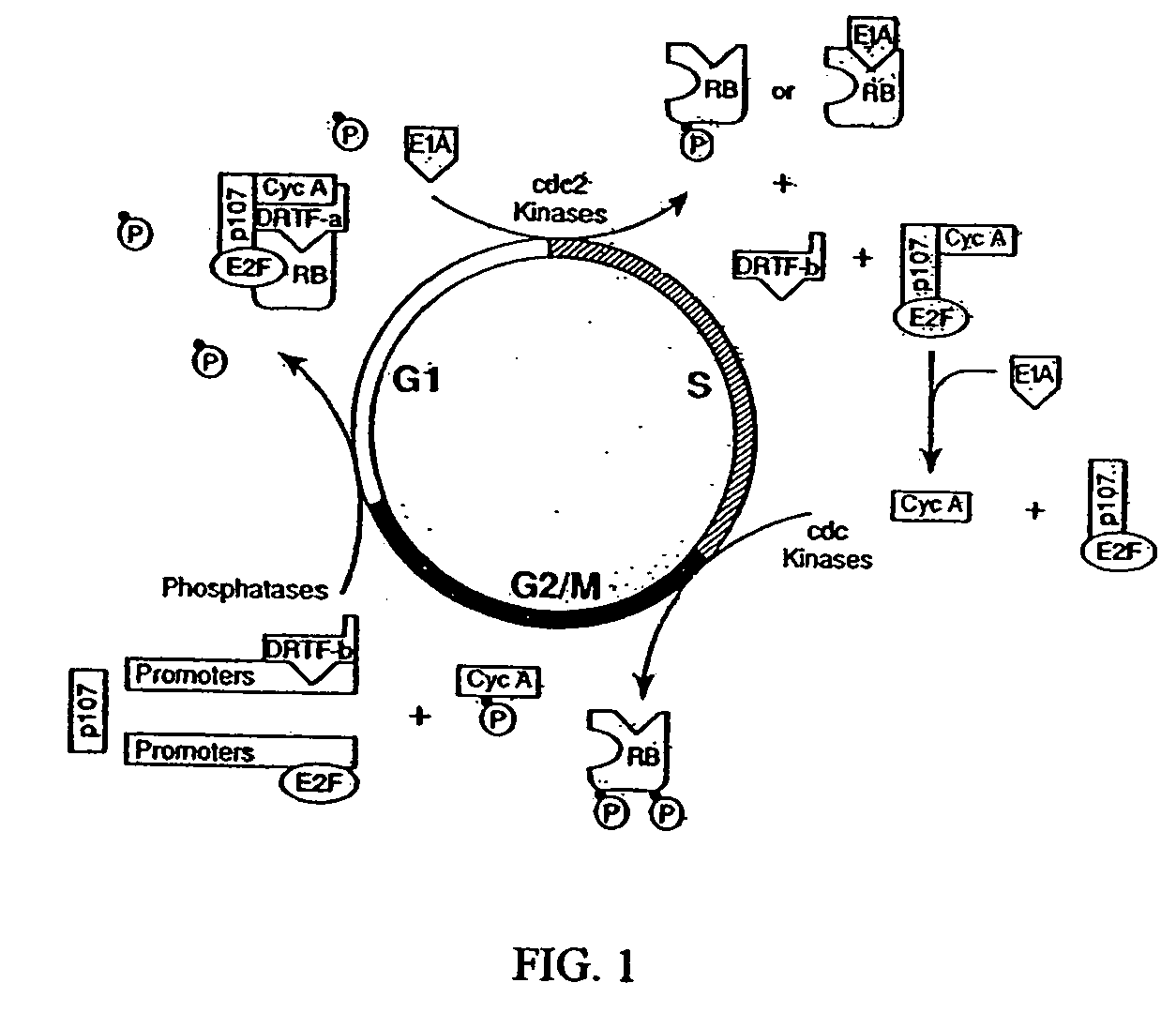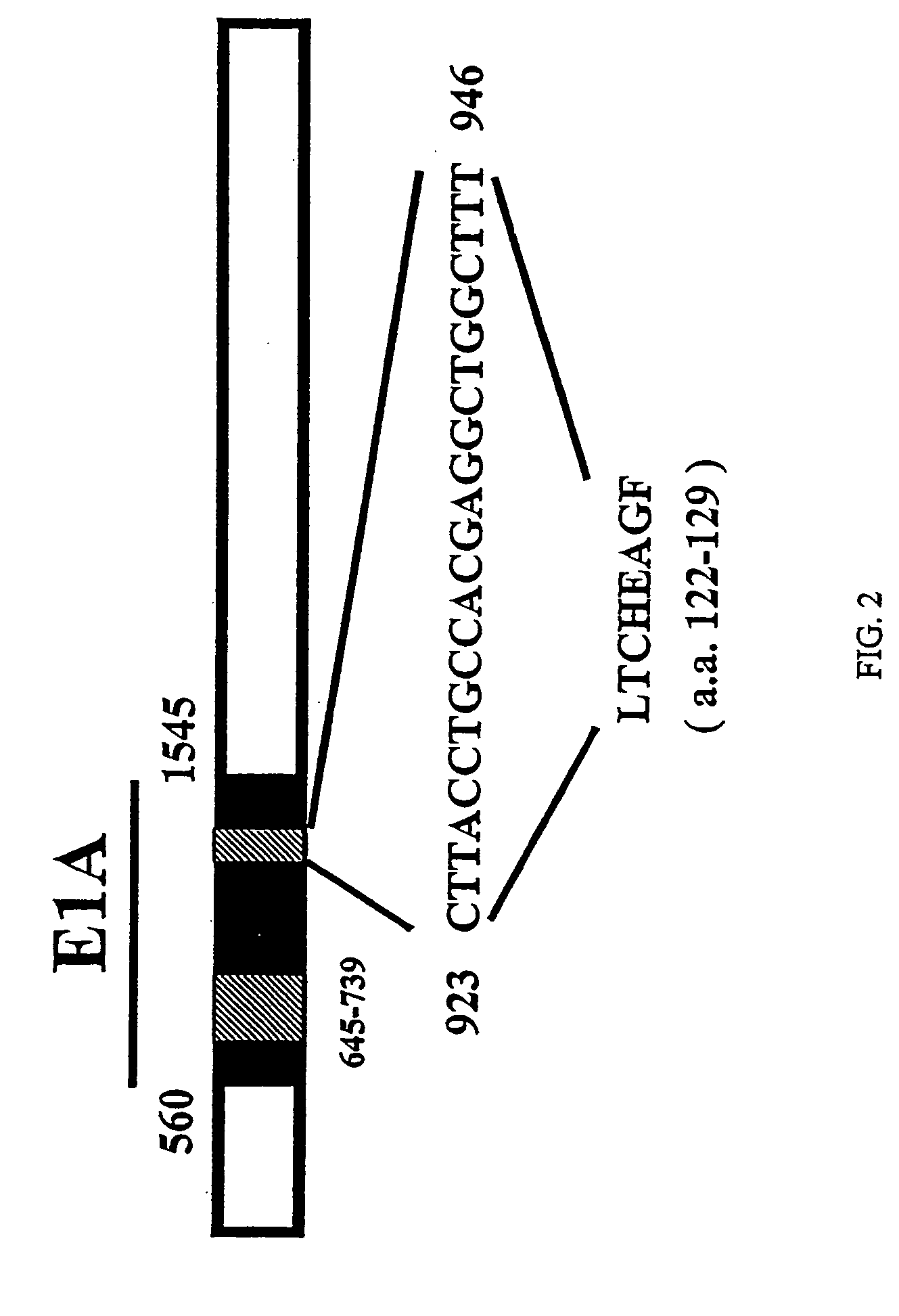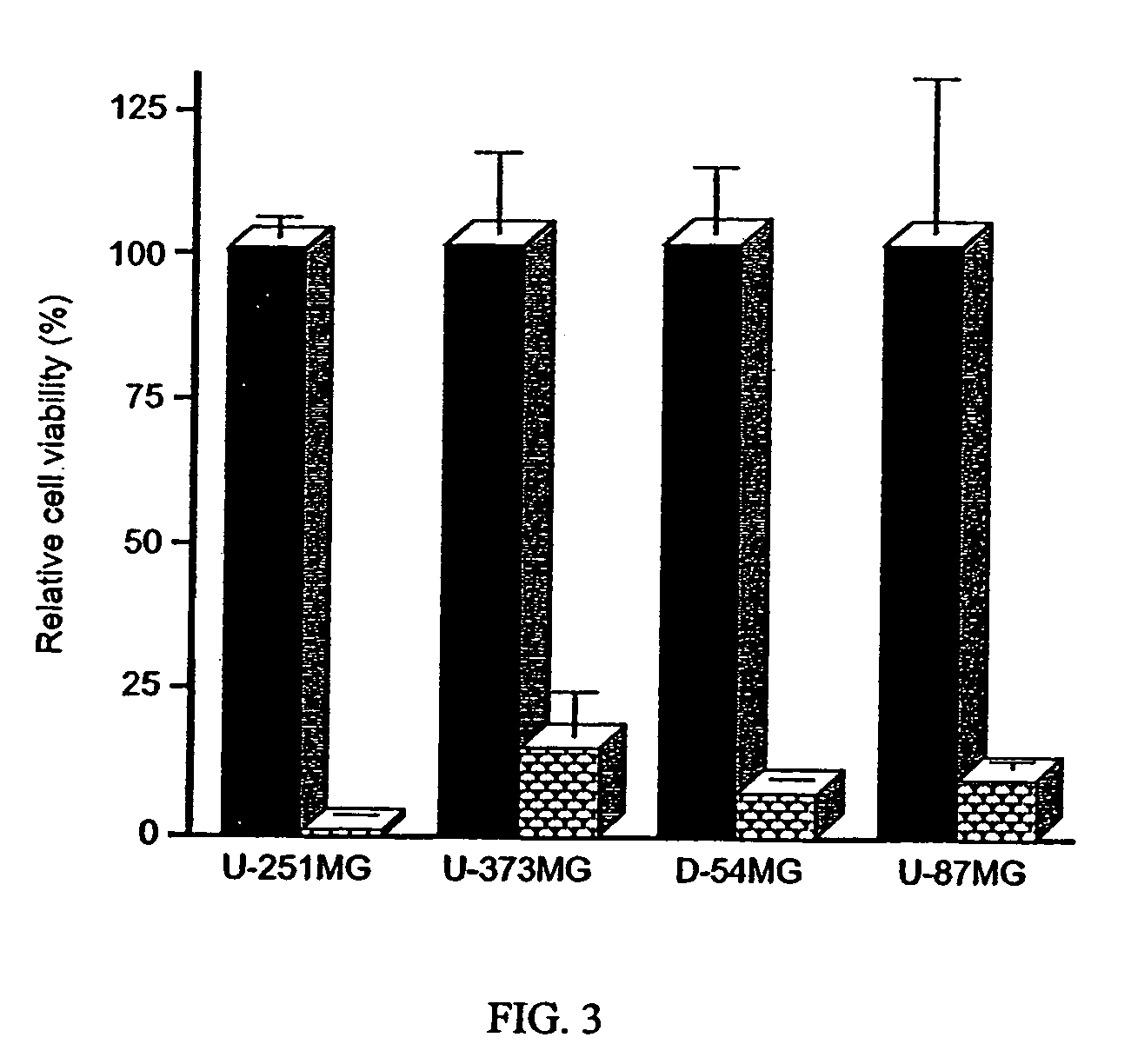Conditionally replicative adenovirus to target the Rb and Rb-related pathways
a technology of adenovirus and rb, applied in the field of tumor-related adenoviruses, can solve the problems of limiting the therapeutic effect of the gene in vivo, affecting the tumor's significant portion realistically, and upset the cell's regulatory machinery for growth control
- Summary
- Abstract
- Description
- Claims
- Application Information
AI Technical Summary
Benefits of technology
Problems solved by technology
Method used
Image
Examples
example 2
[0306] Intracranial Administration
[0307] A sterotactic headframe is implanted under local anesthesia. After intravenous gadolinium administration, a stereotactic MRI is performed for localization of the tumor mass. Histological analysis is performed on the specimen obtained from a stereotactic biopsy to confirm the presence of a tumor. The specimen is also analyzed by immunohistochemistry for the Rb protein and RT-PCR to analyze the nucleotide sequence of the Rb gene.
[0308] The injection of the Δ24 composition is made using a silastic catheter. One ml of liquid containing 3×108 to 1×1011 viral particles of Δ24 is injected over 10 minutes. The needle is flushed with saline to assure delivery of the virus (the volume of the catheter is determined prior to needle placement to assure that only the 1 ml of virus and not the saline is delivered). After injection, the catheter is cut at the level of the skull and closed with a hemoclip. A non-contact CT is performed to verify the site of...
example 3
[0310] Intracranial Administration Using an Implanted Guide-Screw System.
[0311]Δ24 was administered intracranially to mice using an implanted guide-screw system by the method of Lang (Lang et al., 2000). The system comprises a 2.6 mm guide screw with a central 0.5 mm diameter hole that accepts the 26 gauge needle of a Hamilton syringe. The skin was prepared with iodine and a 2 to 3 mm incision was made to the right of midline and anterior to the interauroal line. A small hand-controlled twist drill (1 mm in diameter) was used to make a 1 mm in diameter hole that is 2.5 mm lateral and 1 mm anterior to the bregma. The screw was implanted into the drill hole. The sterilized guide screw was rotated into the hole until it was flush with the skull using a specially devised screwdriver (Plastics One) that holds the guide screw. The shaft of the screw protrudes through the dura and into the brain surface. A cross shaped stylet was used to cap the screw between treatments. Injection of Δ24 ...
example 4
[0312] The E1A-mutant Δ24 adenovirus produces anti-cancer effect in vitro
[0313] The replication-competent Δ24 virus is a human adenovirus 5 that contains a 24-bp deletion in its E1A region (FIG. 2). This deletion did not produce a stop codon, and the Δ24 could express a mutant E1A protein. Immunoprecipitation experiments confirmed however that the mutant E1A protein could not form complexes with the Rb protein (Whyte et al., 1988; Whyte et al., 1989).
[0314] The infectivity of the adenovirus has been previously tested in a variety of glioma and sarcoma cell lines that have disruptions in the p16 / Rb pathway (Fueyo et al., 1996a; Fueyo et al., 1998c). The Δ24 adenovirus had similar effects on the viability of U-251 MG, D-54 MG, U-87 MG, U-373 glioma cells and Saos-2 osteosarcoma cells. Thus, treating any of these cells with the mutant adenovirus at a multiplicity of the infection (MOI) of 10 produced complete monolayer cytolysis (85% or more) within 14 days for most of the glioma cel...
PUM
| Property | Measurement | Unit |
|---|---|---|
| diameter | aaaaa | aaaaa |
| diameter | aaaaa | aaaaa |
| volumes | aaaaa | aaaaa |
Abstract
Description
Claims
Application Information
 Login to View More
Login to View More - R&D
- Intellectual Property
- Life Sciences
- Materials
- Tech Scout
- Unparalleled Data Quality
- Higher Quality Content
- 60% Fewer Hallucinations
Browse by: Latest US Patents, China's latest patents, Technical Efficacy Thesaurus, Application Domain, Technology Topic, Popular Technical Reports.
© 2025 PatSnap. All rights reserved.Legal|Privacy policy|Modern Slavery Act Transparency Statement|Sitemap|About US| Contact US: help@patsnap.com



